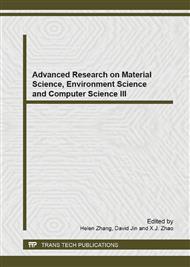p.294
p.299
p.304
p.309
p.314
p.319
p.323
p.329
p.333
Environment Effects of Tuberose Forcing Culture by Different Planting Dates and Varieties
Abstract:
In the northern China, Tuberose is planted in spring following man-forced dormancy in winter and blooms in summer or autumn. The forcing culture was carried out under greenhouse environment to advance blooming to spring and to evaluate the vegetative and reproductive characteristics of tuberose. Effects of three planting dates (30th Oct., 30th Nov, and 20th Dec), two cultivars (Single and Double) were determined. The results showed that Oct planting gave more percentage of corm sprouting, longer spikes and flower stems, more but smaller florets; however, more number of days was required to bloom than other planting dates. Double variety normally had more sprouting, flowering, florets, shorter spikes, and better quality of cutting flower, but it bloomed later than Single variety. The quality of cutting flowers produced in the greenhouse was decreased compared with local field produced flowers, particularly when planting date was late, with the exception of Double in Oct planting. So, the forcing cultivation of tuberose may be performed with Double and in Oct planting in local greenhouse and without man-forced winter dormancy of corm after harvest.
Info:
Periodical:
Pages:
314-318
Citation:
Online since:
January 2014
Authors:
Price:
Сopyright:
© 2014 Trans Tech Publications Ltd. All Rights Reserved
Share:
Citation:


